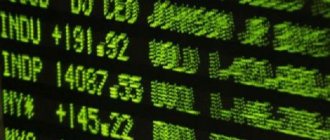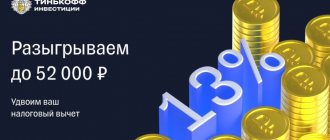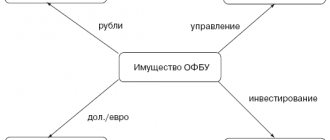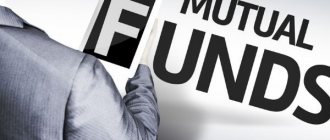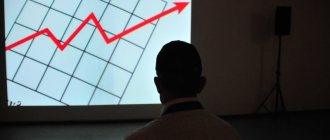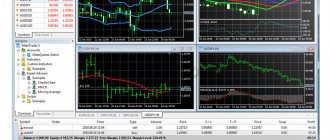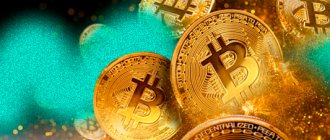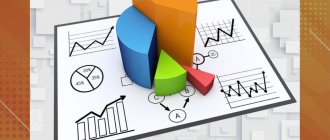Investments
21.08.2020
48982
Author: Igor Smirnov
Photo: pixabay.com
Experienced investors do not seek to invest all their money in the assets of one, even a very promising enterprise, but compile a portfolio of securities from different issuers. However, there are many securities, they are often expensive, and each purchase requires a certain commission.
Last news:
I want to trade Tesla and Apple shares: how to do this in Belarus?
Attracted the most investments in 2022: top 7 Belarusian startups
Therefore, compiling a balanced portfolio requires:
- solid capital for purchase;
- high current costs, because you will have to pay a commission for each transaction;
- Even keeping track of the collected portfolio will require considerable effort and time.
However, the need for balanced investments grew along with the stock markets, and therefore Exchange Traded Funds (ETFs) appeared in the 1980s. They did not immediately fit into the exchange structure; there was resistance, courts, and bans. But now ETFs are powerful structures with many participants and trillions of dollars in capital.
Exchange-traded funds can be described as follows:
ETF is a portfolio (basket) of securities, usually profitable and reliable.
The ETF itself issues shares. These stocks change in price and yield in proportion to the index (average) of the securities in the Fund's portfolio.
Anyone who buys shares of an ETF does not receive rights to individual securities purchased by the Fund, but becomes the owner of a share in the overall portfolio.
An ETF fund is established and managed by a company called an ETF provider. One provider can manage several ETFs.
ETFs operate on exchanges in different countries, including the USA, Canada, Japan, Western Europe and Russia.
An ETF's portfolio may include securities of foreign companies.
Citizens of different countries can own shares in ETFs.
What is an index fund
An index fund is an investment instrument that is a basket of different assets. These assets are collected according to a certain principle: in exactly the same proportion as is done in a specific stock index.
Complete information about current strategies that have already brought millions of passive income to investors
Let me explain with an example. There is an index for the American stock market S&P 500. The 500 largest companies from different sectors are represented there. The whole world monitors the value of this index. Its rise or fall shows not only the state of the US economy, but also the entire world.
The management company Vanguard decided to create a fund that would closely track the S&P 500 index. This means that it included the same stocks and in the same proportion as the index. The result is the Vanguard S&P 500 ETF (ticker: VOO), which today ranks 4th in the world of the largest ETFs by net asset value.
You can see the top 10 world leaders in the image below.
The management company's task is to carry out rebalancing in a timely manner. The index is not a static value. It is regularly revised: some companies leave it, others come, and their shares change. The management company should do the same in its basket of assets.
For example, Lehman Brothers, which went bankrupt in 2008, left the S&P 500 index. This means that it also left the index funds that followed the S&P 500. In December 2022, Tesla entered the index. Management companies were also forced to include it in their index baskets. It turns out that the composition of the fund does not depend on the desire or competence of the manager. It is intended only to comply with the principles of forming a specific index. This principle has advantages and disadvantages. We'll look at them below.
The founder is John Bogle, the founder of the investment company Vanguard Group. He created the first index fund - Vanguard 500 Index Fund.
More than 100 cool lessons, tests and exercises for brain development
Start developing
Assets that may be included in an index fund:
- stock;
- bonds;
- money markets;
- commodities (eg precious metals);
- real estate REITs;
- futures;
- mixed assets.
Index funds are included in the portfolio of investors who use a passive investment strategy. It is increasingly gaining popularity around the world. The “buy and hold” principle is relevant in countries with high financial literacy and a developed stock market. Russians also come to him.
Several graphs to illustrate the emerging trend.
- Chart of growth in the number of ETFs and assets in the world over 7 years
- Diagram of growth in the number of ETFs and mutual funds in Russia over 7 years
- Diagram of growth in the number of investors in ETFs and mutual funds
SPDR Gold Trust
Fund (GLD, founded 2004) based on following the price of gold. GLD is used as a hedging asset in the portfolio. It includes one single asset – gold.
The table below shows the main characteristics of the fund ↓
| Fund parameters | Meaning |
| Ticker | GLD |
| Type | Commodity (precious metals) |
| Investment costs (Expense Ratio) | 0,4% |
| Number of assets | 1 |
| Profitability | |
| Profitability over 5 years | 42,4% |
| Profitability for 3 years | 30,4% |
| Risk | |
| Volatility | 9,5% |
| Beta coefficient (β) | -0,08 |
The fund follows a single asset: gold. Suitable for reducing portfolio risks and as a savings asset
Features of index investing in Russia
In the article I will talk about how to properly invest in index funds for Russian investors. The following instruments are available in Russia: ETF, mutual fund and exchange-traded mutual fund (BPIF).
ETF
ETF is an index exchange-traded fund whose shares are traded on an exchange. There are already more than 7.5 thousand of these in the world, in Russia there are only 16 at the end of 2022.
Its essence is that an investor buys one share of an ETF and becomes the owner of a share of the companies that are part of it. An index fund follows a specific index and rises and falls with it.
The full list of ETFs available on the Moscow Exchange can be found on the official website of the exchange in the Exchange-Traded Funds tab. But it also has another instrument - BPIF. We will talk about it separately. The main ETF provider in Russia is FinEx. It accounts for 14 of the 16 funds.
Unfortunately, Russian investors are limited in their investments in the international market. Due to sanctions, many foreign brokers refused to work with us. And Russian intermediaries provide access to foreign stock markets only to qualified investors or through their offshore subsidiaries.
If you have an account with a foreign broker or have qualified status, you can view a list of foreign ETFs on etf.com. The choice is huge. Another advantage of investing in global markets is the low ETF management fees. For the leaders it is only 0.03–0.09%.
The investment company United Traders works with Russians and provides access to foreign stock markets to unqualified investors. But this is not a brokerage organization, it is not subject to regulation by the Central Bank and does not have a Russian license.
BPIF
BTIF (exchange-traded mutual index fund) is an instrument similar to an ETF. It is also traded on the stock exchange, invented in Russia to return money to investors in mutual funds, which have lost their popularity due to opacity and low profitability. But there are significant differences from ETFs:
- Has purely Russian jurisdiction. Russian companies that are closely related to the management company also serve as controlling organizations. For example, VTB Special Dep and VTB Registrar for BPIFs from VTB Management Company.
- Doesn't necessarily follow a specific index. For example, the “eternal portfolio” strategies from Tinkoff Management Company in the mutual funds TRUR, TUSD and TEUR. They include stocks, bonds, cash and gold.
- They don’t pay tax on dividends, which is a competitive advantage because ETFs do.
- Some mutual funds do not assemble a portfolio of assets themselves, following the index, but buy a ready-made foreign ETF. For example, VTBA includes the iShares Core S&P 500 ETF. The management company takes a commission for this work.
- Fees are sometimes, but not always, higher than ETF management fees. For example, the Moscow Exchange calculated average expenses: for ETFs - 0.77%, for BPIF - 0.9%.
mutual fund
Mutual investment fund is the oldest instrument on the Russian market. Its main difference from those discussed above is that shares are not sold on the stock exchange, but only in management companies.
There are many different types of mutual funds, but we are interested in index ones. The principle of their formation is the same as that of ETFs and mutual funds: the management company, for a commission, includes assets in the fund, following the selected index. Investors buy shares in the management company and make money from the increase in their value.
The full list of mutual funds can be viewed on InvestFunds. I set the filters and got only 5 index ones.
ETF commission - how to calculate
Russian investment funds charge clients up to 1% per year. The services of American brokers are more profitable. The tariff can be 10-20 times cheaper when compared with Russian companies.
Management fees are charged for the period of holding the shares. For example, the contract states that the fund management fee is 1.1% per year. If an investor bought 10 ETFs for RUB 10,000, then he would be charged about 0.003% daily. Converted to rubles, this amounts to 30 kopecks. Every day 3 kopecks will be debited from each share.
Step-by-step instructions for investing in index funds
I give instructions for dummies on investing in index funds. We will talk about purchasing ETF shares and shares of mutual investment funds on the Moscow Exchange.
Opening a brokerage account
To purchase shares and shares on the stock exchange, you need an intermediary - a broker. It provides access to the stock market and, on behalf of the investor, carries out transactions for the purchase or sale of securities. For operations on the stock exchange, an agreement for brokerage and depository services is concluded, a brokerage account is opened, where the money will be received.
The first step on the investment path is choosing a broker. Main criteria:
- reliability - the license is checked on the Central Bank website and the rating on the Moscow Exchange;
- terms of service - commissions, trading platforms, restrictions on deposits and withdrawals of funds, etc.;
- ease of use – online account opening, mobile application, computer application, office at the client’s place of residence, etc.
After choosing a broker, all that remains is to open a brokerage account. The application is submitted online. The only documents you will need are a passport; TIN and SNILS are less often requested. As a rule, the account will be opened the next day and you can start investing.
Analysis of ETFs and mutual funds
Passive investing through index funds requires minimal time. But a basic analysis of ETFs and mutual funds needs to be carried out. Let's look at the main parameters that you should pay attention to when choosing a specific instrument for your portfolio.
- Underlying asset
The underlying asset may be an index followed by a fund or a foreign ETF. In the second case, it turns out that the management company buys a ready-made ETF and takes its own commission for this, in addition to the ETF commission. It is better to look at information about the underlying asset in the table prepared by the Moscow Exchange.
- Issuer
There are only 2 ETF management companies in Russia: FinEx and ITI Funds. For BPIFs – 11 (at the end of 2022). It is necessary to pay attention to the history of the management company and the level of control over its activities. For example, FinEx is monitored by the Central Bank of Ireland, the European Securities and Markets Commission, the UK Financial Conduct Authority and the Central Bank of Russia.
Below I have posted a current picture from my teacher Sergei Spirin about all the management companies that are currently listed on the Moscow Exchange.
- Tracking Error
This is a parameter that determines how closely the fund follows the index. The lower the value, the better. FinEx must indicate this parameter in the description of its funds. BPIFs are not indicated.
- Profitability
The first ETF in Russia appeared in 2013. This is a decent period to evaluate its profitability. BPIFs launched on the market only in 2018, so it is difficult to judge their effectiveness. But it is always possible to estimate the return of the index followed by the fund over a multi-year period. This is where tracking error plays a key role.
- Commissions
This is one of the most important criteria when choosing. Look at this interesting table of the impact of costs on investor profits. Foreign ETFs are much more attractive than Russian ones, because their commissions are tens of times lower.
Analysis of an index fund using the example of the US Dividend Aristocrats mutual fund
As an example, let’s analyze the new mutual fund from Finam Management “Dividend Aristocrats USA” (FMUS). It entered the stock exchange on 02/08/2021. Management Company Finam Management is part of the largest investment company Finam, all necessary documents and licenses are available. FMUS is the first exchange instrument for it.
The fund follows the Dow Jones US Dividend 100 index. But it invests money not directly, but through a ready-made ETF - the Schwab US Dividend Equity ETF. The stock includes shares of 100 large American companies that have been paying and increasing dividends for 10 years or more. Among them are ExxonMobil, Texas Instruments Incorporated, PepsiCo, BlackRock, The Coca-Cola Company, International Business Machines Corporation (IBM), etc.
Over the past year, American ETF shares have brought investors 16% per annum, the average return over the past 5 years is 21% per annum. The Schwab US Dividend Equity ETF pays its holders 3% per annum in dividends. The Finam fund reinvests them.
Expenses at the time of writing were 6.51%. But literally a few weeks after the fund went public on the stock exchange, they were revised downwards significantly:
- Schwab US Dividend Equity ETF management fee – 0.06% per year;
- management remuneration – up to 0.7%;
- remuneration to the depositary, registrar and exchange – up to 0.25%;
- other expenses – up to 0.15%.
The total is 1.16% of the net asset value. Compare with the 0.06% commission for the ETF whose shares are purchased by Finam Management. My conclusion is clear: with a commission of 6.51%, FMUS will definitely not be in my portfolio. But in the new situation, those investors who do not have accounts with a foreign broker and qualifying status to enter foreign exchanges can already take a closer look at purchasing it. The commission is still quite high, but not as crazy as in the first option.
Portfolio formation
At this stage, the long-term investor must determine the structure of his investment portfolio. It will depend on the risk profile, financial goals and timing for achieving them. The main principle that must be observed is diversification. And this is best accomplished with the help of index funds.
I will again turn to Sergei Spirin and his classification of all funds on the Moscow Exchange by type of asset.
As an example (but not an investment recommendation), I will give my dad's portfolio. According to his risk profile, he is more of an aggressive than a conservative investor, but his age of 67 years does not allow him to invest in assets with high potential returns and risk. We put together the following portfolio:
- FXRU – Eurobonds of Russian issuers;
- FXRB – Eurobonds of Russian issuers with ruble hedge;
- FXUS – shares of American companies;
- FXIT – shares of American IT companies;
- FXCN – shares of Chinese companies;
- FXRL – shares of Russian issuers.
The distribution was conservative: 60% went to bonds, 40% to stocks. Dad did not want to include a protective asset in the form of a gold fund. For the year, the portfolio's return was 27%. Dad is happy. Plus, he will also receive a 13% income tax refund from the IIS.
And one more example. This is already my daughter's briefcase. She is 19 years old and has a long-term financial goal (minimum 10 years). It included not only funds, but also shares of individual issuers. But the portfolio is based on ETFs, including a protective asset in the form of gold FXGD:
- international market shares (FXUS, FXIT, FXCN, FXDE) – 30%;
- shares of the Russian market (FXRL and shares of individual issuers) – 40%;
- bonds (FXRU, FXRB) – 25%;
- gold (FXGD) – 5%.
The portfolio is more aggressive. 70% was allocated to stocks, but my daughter’s age and long-term goal make it possible to do this. Profitability over the last year is 22%.
Purchasing shares or fund units
This is the easiest stage of investing. When the strategy is determined and the funds in the portfolio are selected, all that remains is to buy shares or shares. To do this, you need to give a purchase order to your broker. Each of them has different trading terminals, so first study the interface and carefully fill out the required fields to submit an application.
ETFs and mutual funds are traded in T+2 mode. This means that you will become the owner of the purchased shares and shares 2 days after the actual transaction.
Taxation of profits on ETFs
Most ETFs on the Moscow Exchange reinvest dividends rather than pay them out to investors. In the first case, the fund pays 15% to the state, and in the second case, the investor independently pays 13%.
If a broker's client sells securities for more than he bought, he pays tax on the income. For example, shares were purchased for the amount of 20,000 rubles, six months later they were sold for 23,000 rubles. In this case, a commission of 20 rubles was taken. in the first case and 23 rubles. in the second. To calculate the tax, the following formula is used: 23,000 - 20,000 - 23 - 20 = 2,957 rubles. 2957 x 13% = 384 rub.
Most brokerage companies calculate and withhold tax on their own, so you don’t need to do anything yourself. If you buy ETFs and hold them for 3 years, and then sell the assets, you don’t have to pay tax.
Russian investors need to fill out Form W-8BEN when working with a foreign broker. In this case, the American company will withhold 10% of the dividends, and the Russian citizen must pay 3% on his own. When selling securities, the tax rate is 13%. A broker in the USA does not charge tax on transactions with securities; this must be done by a Russian citizen.
Pros and cons of passive investing
The passive investing strategy has its pros and cons. And it is better to know them before you form an investment portfolio.
Pros:
- affordability - shares and units of some mutual funds and ETFs cost little money (for example, FMUS costs only 10 rubles);
- diversification – you can form a portfolio from funds by distributing assets across different countries, markets, currencies and instruments;
- minimum time for analysis - no need to waste time and money on learning technical and fundamental analysis, monitoring markets and studying expert reports;
- transparency of the composition - the index is always open for viewing, the composition is revised once a quarter, and information about this is publicly available;
- high liquidity – there is always a large number of sellers and buyers on the stock market, a transaction can be completed instantly, market makers provide trading liquidity;
- tax benefits – purchase of shares and shares on an individual investment account is available, the long-term ownership benefit (LDV) applies.
Minuses:
- high commissions compared to foreign ETFs;
- index funds sometimes close, but investors do not have to worry about this, because they will receive their money in full;
- the fund may include shares of a company that you do not like, but the management company is obliged to include it because it strictly follows the index;
- a large tracking error can significantly degrade profitability;
- Almost all funds reinvest dividends and coupons - some investors are not happy with this;
- There is a very small selection of ETFs and mutual funds on the Russian market; for example, there are no funds for the real estate market at all.
Who are you: active or passive?
There are hundreds of studies (like this one) about the disadvantages of active management showing that in the vast majority of cases, fund managers cannot beat the index. As the time interval under consideration increases, the percentage of losers to the index increases.
On the other hand, if you can choose the right fund, the gains can far exceed the standard return from index investing. The problem is that the probability of a correct choice, as well as a future victory, is very small.
I wouldn't risk my future money/profits/nerves - and I wouldn't bet on an actively managed fund. As an option, if you really want to, allocate a small part of your portfolio to this business (play around).
